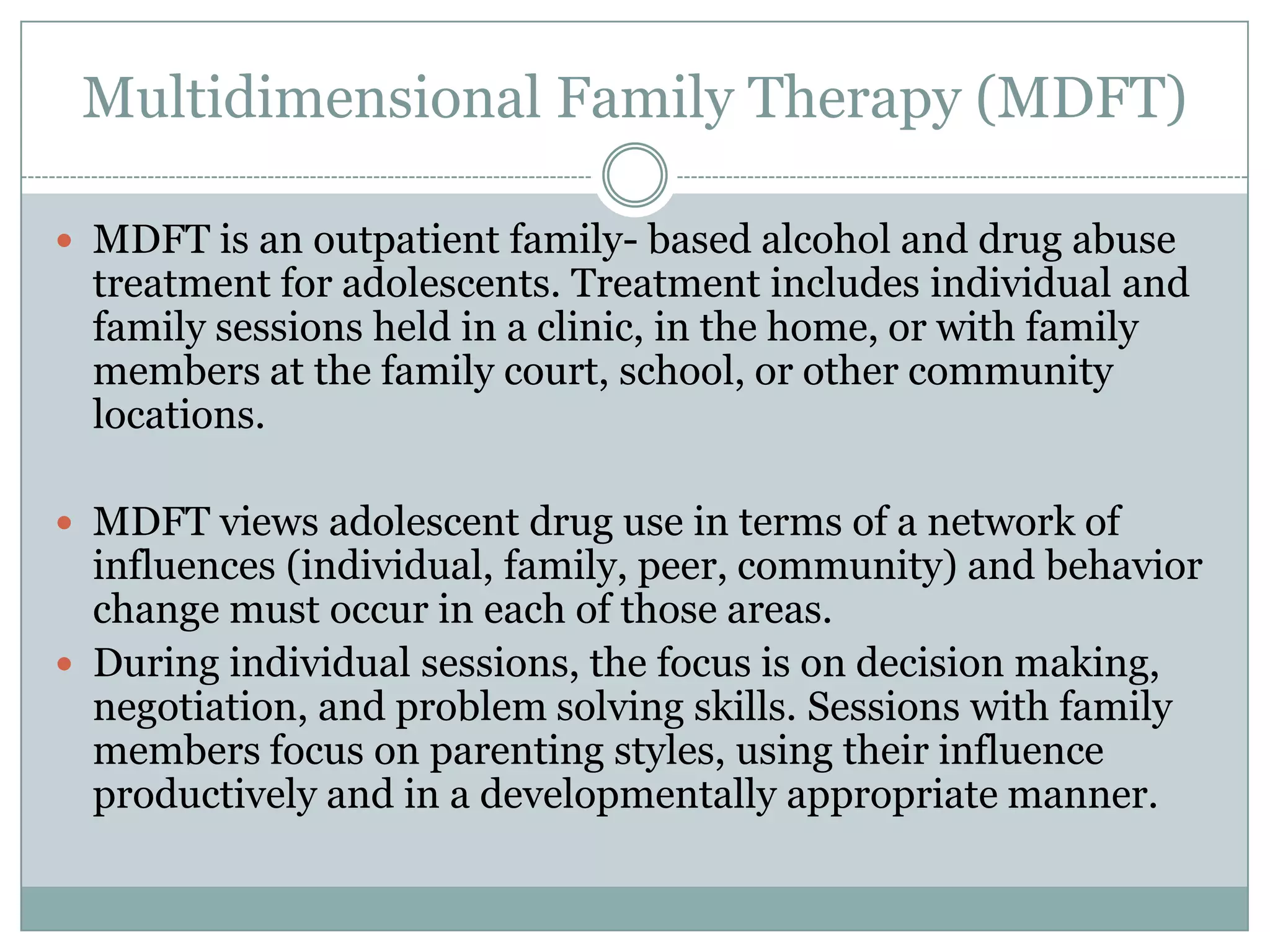Effective therapies for drug and alcohol addiction include CBT, community reinforcement approach plus vouchers, contingency management/motivational incentives, motivational enhancement therapy, the Matrix Model, 12-step facilitation therapy, and behavioral couples therapy. Therapies created for adults like CBT, MET, and the Matrix Model need modifications to be effective for adolescents. Family-based therapies shown to work for adolescents include multisystemic therapy, multidimensional family therapy, and brief strategic family therapy. These therapies aim to improve individual and family dynamics that influence adolescent substance use.














